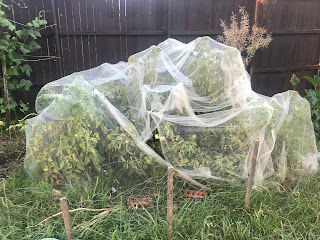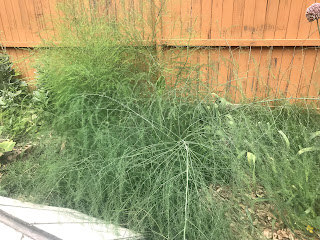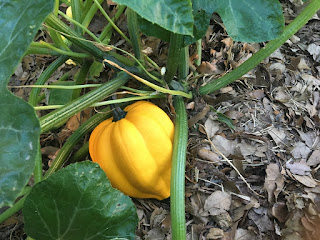Summer 2020 Update
The garden has done pretty well overall this year. We had a very mild winter, and the cool weather stuff did pretty well for the most part.
- Planted spinach in several batches through the winter and it did pretty well.
- Kale planted in fall overwintered well
- Cabbage didn't do to well, mainly because it was attacked by aphids, and I neglected it.
- Lettuce did very well too, most of it was protected by a glass cover "hotbed" that I create during the winter for it.
I started a bunch of tomato seedlings early January, both Rutgers and Beefstake. I also started some Cindarella Pumpkins (Rouge Vif d'Etampes) plants in early March in pots too, along with some Cocozelle zucchini, and some round zucchini too. I also started some bell pepper plants.
Tomatoes
I've had the best tomato harvest ever, mainly because I planted so many plants, and I started so early. I planted both Rutgers and Beefsteak varieties, both hierloom. I started them from seed in early January, under grow lights. I nurtured 18 plants, and would bring them out on nice days, and kept upgrading their pots, until late March, when they were quite big. I gave 6 plants to my sister, and planted 12 myself in late March, hoping for no late season freeze. They grew very well and started producing like crazy. Unfortunate the birds found them so I had to cover them with some netting to help reduce the damage, as the dumb bird will peck out holes in many of them.
Despite the bird damage, I've picked lots of tomatoes, most when they just start turning reddish, so to prevent losing some. But we've had more than enough, and given a bunch away to friends. The plants dont look so good now, they are pretty spent, plus its getting real hot, so I will probably pull them out in a few weeks.
Pumpkins/Squash
I started my Rouge Vif d'Etampes pumpkins pretty early too (late Feb.) from seed, and put them in the ground in mid-March, being prepared to cover them in case we got frost, but we didn't fortunately. This is the easiest way to get around the bad pests such as the squash vine borer (SVB), and squash bugs. Usually the squash bugs show up first, in later April, and the SVB in late May. By this time the plants are strong and are already producing.
My pumpkins did very well. The plants got huge, with the vines over 35 feet long!
Here is what it looked like last week. They are growing along the side of the house, which in late spring and summer gets pretty good sun during most of the day. By the time I took this picture, I have picked 2 already. There are around 5 more on the vine, at different stages.
The biggest one is 31lbs:
Here are the first 2, along with a mongrel pumpkin:
The mongrel pumpkin is actually from a Round zucchini plant I grew last year . Last year I had some round zucchini and sugar pie pumpkin plants that I grew together and I cross pollinated, and then I saved a override zucchini to use as fall decoration, and then saved the seeds. I planted some of those seeds.
Whats interesting is that the plants are basically 2 types. A couple of the plants were very similar to the original pure round zukes. They were bush-type with the normal fruit. The leaves were also very pretty with the silver streaks. The other plants started off looking very similar, but then as they matured, the started running and became more pumpkin-like. The fruit were similar when young, and I picked the "zukes" from both, but as the fruit got bigger in these "viney" plants, they looked more like pumpkins. I let a few mature. One got big and orange, and is pictured above, and looks like a regular pumpkin. Another one is a bit smaller and yellowish, more like the mature Round zucchini. These are also winding down now too. I've gotten tons of squash from these and have given much away, along with a couple of Cocozelle zuke plants which have also produced very nicely.
So as expected the squash bugs showed up in mid-April, a few at a time, but I would kill them on sight, so I kept their numbers, and impact down. Only recently are they getting out of hand, but thats because I've been busy with other projects and plus the plants are so big that inspection is not very practical or fun. But the easy way to find them is to spray the plants. When the bugs get wet, they usually walk up to the top of the plant, and are easy to see. Then I just crush them with my fingers. No big deal, very quick and easy and the leave a "Dr. Pepper" smell, which I don't mind.
This year has been a very mild SVB year, surprisingly! I have only seen 3 moths this year, and I was able to kill them all. I have seen a few eggs, but believe it or not, I have not seen any major damage from them, so they have been fairly inconsequential this year. That's so nice! Again, the key to defeating them in general is to start EARLY. They really only have a big impact late May usually, and by that time your plants and withstand them.


























































